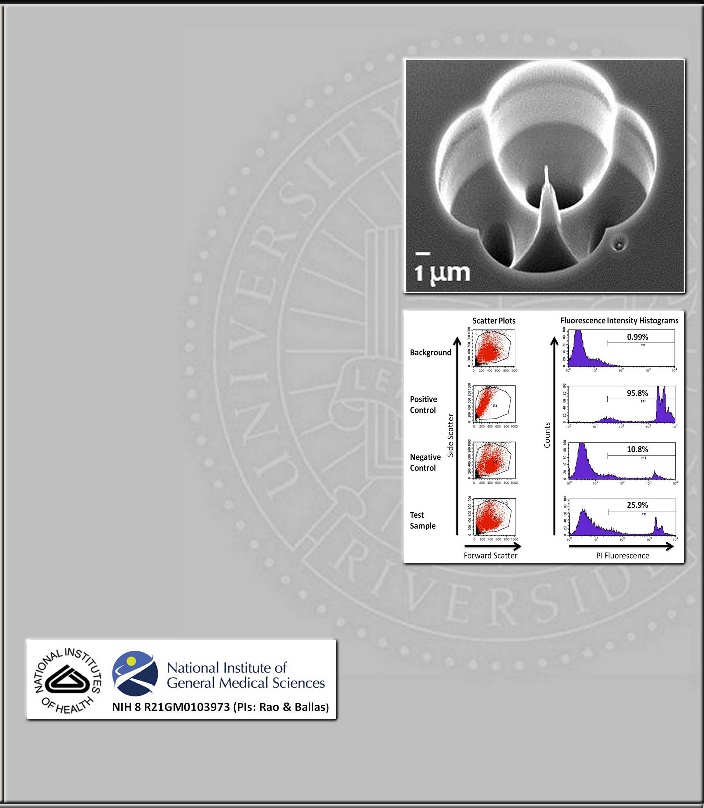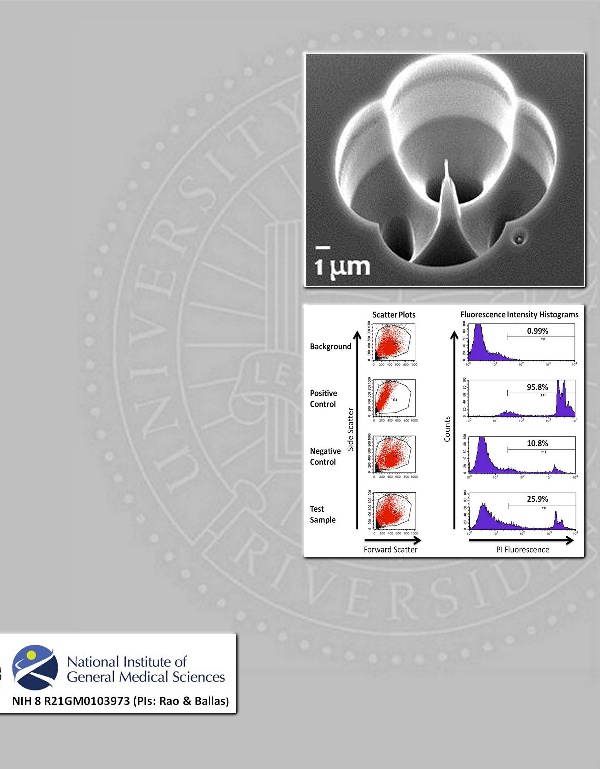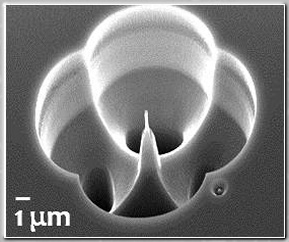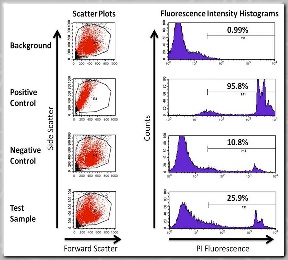












Copyright 2016 Biomedical Microdevices Laboratory
Current Research
Representative publications:
[1] Y Zhang, CB Ballas, and MP Rao. IEEE EMBC 2012.
[2] Y Zhang, D Nampe, HG Dixit, CB Ballas, H Tsutsui, and MP Rao. MMB 2013.
[1] Y Zhang, CB Ballas, and MP Rao. IEEE EMBC 2012.
[2] Y Zhang, D Nampe, HG Dixit, CB Ballas, H Tsutsui, and MP Rao. MMB 2013.
Top: Scanning electron micrograph of a
single capture site within a UHT
mechanoporation device with 10k
capture sites. Bottom: Flow cytometry
results showing poration efficiency for
K562 human leukemia cells [1].
Cellular manipulation
Research in this thrust focuses on developing novel MEMS-based microinjection instrumentation that may eventually serve as a fundamental enabler for cell-based therapies.
Microinjection represents the "gold standard" for cellular manipulation, due to its precision, safety, and applicability to a wide variety of cell types and molecules. However, the reliance of conventional microinjection instrumentation upon manual operation and serialized injection limits throughput (~3 cells/min). This therefore precludes its use for ex vivo cell therapies, where microinjection could address safety concerns associated with prevailing bulk manipulation techniques (e.g. viral vectors, electroporation, & lipofection).
The Si-based ultrahigh throughput (UHT) mechanoporation device shown here represents the first step towards addressing this limitation. The key novelty of this device lies in its monolithic integration of cell capture and poration functions, as well as its massive-parallelization, which provides opportunity for UHT operation with minimal human or robotic involvement. Thus far, we have demonstrated devices capable of throughputs > 1k cells/min, which exceeds the state-of-the-art by 2 - 3 orders of magnitude and begins to approach the throughputs required for clinical relevance [1,2].
Collaborators:
CB Ballas, Indiana Univ SoM, Hematology/Oncology
H Tsutsui, ME, UCR
Research in this thrust focuses on developing novel MEMS-based microinjection instrumentation that may eventually serve as a fundamental enabler for cell-based therapies.
Microinjection represents the "gold standard" for cellular manipulation, due to its precision, safety, and applicability to a wide variety of cell types and molecules. However, the reliance of conventional microinjection instrumentation upon manual operation and serialized injection limits throughput (~3 cells/min). This therefore precludes its use for ex vivo cell therapies, where microinjection could address safety concerns associated with prevailing bulk manipulation techniques (e.g. viral vectors, electroporation, & lipofection).
The Si-based ultrahigh throughput (UHT) mechanoporation device shown here represents the first step towards addressing this limitation. The key novelty of this device lies in its monolithic integration of cell capture and poration functions, as well as its massive-parallelization, which provides opportunity for UHT operation with minimal human or robotic involvement. Thus far, we have demonstrated devices capable of throughputs > 1k cells/min, which exceeds the state-of-the-art by 2 - 3 orders of magnitude and begins to approach the throughputs required for clinical relevance [1,2].
Collaborators:
CB Ballas, Indiana Univ SoM, Hematology/Oncology
H Tsutsui, ME, UCR
Sponsors:














